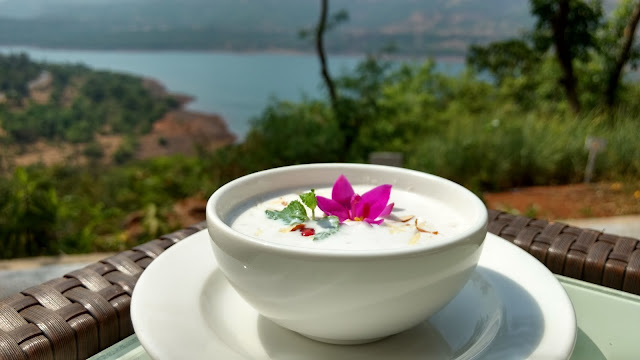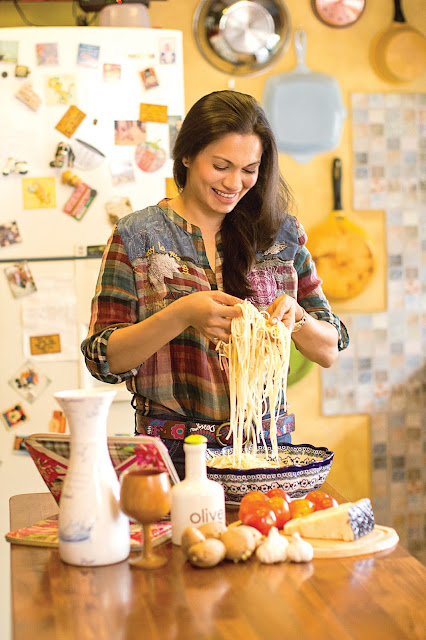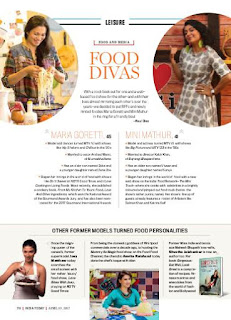Forget about the rather common chakna and the plebian peanuts as bar snacks, and get ready to nosh
on a whole new spectrum of quirky and oh, so interesting bar eats being served
up at the Mumbai’s hottest ‘wateringholes’
By
Raul Dias
Gosht
and Sandalwood Mulayam Seekh Kebab
Served up in a dish that’s fashioned on the lines of an old coal clothes’ iron, the quirkiness of these kebabs is further enhanced when you bite into them and discover their canny little secret. Sandalwood! Yes, the silken soft lamb seekh kebabs are flavoured with rose petals, sandalwood, ginger, green chilli and smoked with stone flower and accompanied by dry fruit bakarkhani with a spritz of fresh coriander jalapeno chutney
At Razzberry Rhinoceros, Juhu Hotel, Airport Area, Juhu
Call 7400402604/05
Cost Rs 625
Served up in a dish that’s fashioned on the lines of an old coal clothes’ iron, the quirkiness of these kebabs is further enhanced when you bite into them and discover their canny little secret. Sandalwood! Yes, the silken soft lamb seekh kebabs are flavoured with rose petals, sandalwood, ginger, green chilli and smoked with stone flower and accompanied by dry fruit bakarkhani with a spritz of fresh coriander jalapeno chutney
At Razzberry Rhinoceros, Juhu Hotel, Airport Area, Juhu
Call 7400402604/05
Cost Rs 625
Baked
‘Vegetarian’ Chicken Puff
Do pardon the rather oxymoronic name of this bar bite and just take a bite of this delectable Cantonese snack. It is prepared with a base of flour and oil along with a filling of deep fried mock chicken, sesame seeds, black pepper powder, vegetables, egg yolk, oyster sauce and chopped onions along with the seasoning of salt and spices.
At Yauatcha, Raheja Tower, BKC, Bandra East
Call 9222222800
Cost Rs 295
Do pardon the rather oxymoronic name of this bar bite and just take a bite of this delectable Cantonese snack. It is prepared with a base of flour and oil along with a filling of deep fried mock chicken, sesame seeds, black pepper powder, vegetables, egg yolk, oyster sauce and chopped onions along with the seasoning of salt and spices.
At Yauatcha, Raheja Tower, BKC, Bandra East
Call 9222222800
Cost Rs 295
Dhokla
Redefined
This one is made up of six pieces of sweet, authentic dhokla that have been seared with clarified butter, and served hot topped with guacamole and feta cheese. All this is then garnished with cilantro fronds.
At Radio Bar, Hotel New Castle, Linking Road, Bandra West
Call 26499900
Cost Rs 290
This one is made up of six pieces of sweet, authentic dhokla that have been seared with clarified butter, and served hot topped with guacamole and feta cheese. All this is then garnished with cilantro fronds.
At Radio Bar, Hotel New Castle, Linking Road, Bandra West
Call 26499900
Cost Rs 290
Amritsari
Fish Popcorn
Bar Bar—the Kurla drinking bar, has garnered quite a reputation of going pop with its food. Here, the chefs have taken some classics and then added a fun twist to them. The Amritsari fish popcorn is one such example. A seafood lovers go-to snack, this bar bite has chunks of fish cooked in spicy Amritsari masala and served with a side of mint-mango chutney.
At Bar Bar, Lal Bahadur Shastri Marg, Kamani, Kurla West
Call 33126020
Cost Rs 269
Bar Bar—the Kurla drinking bar, has garnered quite a reputation of going pop with its food. Here, the chefs have taken some classics and then added a fun twist to them. The Amritsari fish popcorn is one such example. A seafood lovers go-to snack, this bar bite has chunks of fish cooked in spicy Amritsari masala and served with a side of mint-mango chutney.
At Bar Bar, Lal Bahadur Shastri Marg, Kamani, Kurla West
Call 33126020
Cost Rs 269
Yucca
Chips
Yucca aka. cassava aka. manioc is a root vegetable native to Latin America and is known for its versatility. Made from this tuber, the hand cut chips at Lima are served at the bar either fried or baked. The chips are then dusted with a chipotle chilli rub and accompanied with a freshly made sriracha chilli mayonnaise.
At Lima, Maker Maxity, North Avenue 2, BKC, Bandra East
Call 30005040
Cost Rs 225
Yucca aka. cassava aka. manioc is a root vegetable native to Latin America and is known for its versatility. Made from this tuber, the hand cut chips at Lima are served at the bar either fried or baked. The chips are then dusted with a chipotle chilli rub and accompanied with a freshly made sriracha chilli mayonnaise.
At Lima, Maker Maxity, North Avenue 2, BKC, Bandra East
Call 30005040
Cost Rs 225
Smashed
Avocado and Smoked Jalapeno Falafel
Here, South America meets the Middle East with this take on a humble falafel that’s jazzed up with a smashed avocado pulp, smoked jalapeno peppers and pumpkin and served with a side of quinoa cracklings.
At Estella, Nichani Kutir, Juhu Tara Road, Juhu
Call 7999998232/7999998212
Cost Rs 450
Here, South America meets the Middle East with this take on a humble falafel that’s jazzed up with a smashed avocado pulp, smoked jalapeno peppers and pumpkin and served with a side of quinoa cracklings.
At Estella, Nichani Kutir, Juhu Tara Road, Juhu
Call 7999998232/7999998212
Cost Rs 450
(An edited version of this article appeared in the 29th May 2017 issue of the evening edition of Mid-Day newspaper, India http://www.mid-day.com/articles/mumbai-food-quirky-food-city-hottest-bars-falafel-yucca-chips-seekh-kebab/18289196)





















